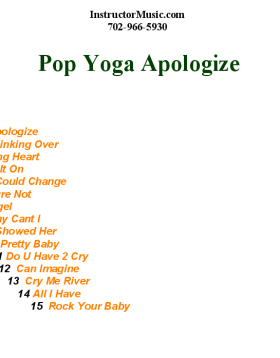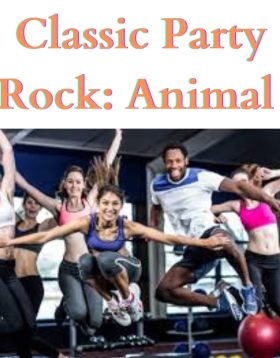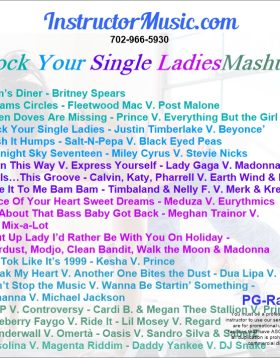
The end of each calendar year gives us the opportunity for a fun thought-experiment: predicting what the future of fitness holds and making educated guesses about the various ways we might be exercising and moving differently in the coming year. The following list, though not exhaustive, was compiled with input from individuals who work for a variety of fitness industry companies, including equipment manufacturers, certification organizations and health clubs. Though not exhaustive, this list offers an overview of the ways that we might be sweating in the not-too-distant future.
- Commercial fitness facilities all over the world will experience a resurgence in popularity. When pandemic-related restrictions limited access to commercial facilities, fitness enthusiasts adapted by creating garage gyms and signing up for both live and on-demand streaming workouts to exercise at home. While exercising at home offers numerous health benefits, being at a facility, whether taking a class in a studio or lifting a barbell on the weight floor, is a completely different experience. As a result, individuals who were die-hard exercise adherents have already returned to their favorite gyms and studios, while those who used the opportunity of the pandemic to start a workout program will join a facility in an effort to have more variety and take workouts from instructors in-person, as opposed to an online setting.
- The explosive growth of in-home, online programming combined with the return to live facilities means that financiers, specifically the venture capital and private equity organizations that provide the funding to help businesses grow, continue to see viable, lucrative investment opportunities in the fitness industry. The monthly health-club membership fee is a subscription model that can be applied to apps and online streaming services. As a result, in 2022 there will be more capital looking for ways to invest in fitness. At the end of 2020, Peloton surprised the industry by purchasing commercial equipment company Precor. Beachbody, the company behind P90X, Insanity and Turbo Kick, used a special-purpose acquisition company (SPAC) to become a publicly-traded company in 2021. Investment bank Credit Suisse is now tracking the wellness sector as a component of consumer spending. Finally, McKinsey & Company, a management consulting firm, values the overall wellness market at more than one trillion dollars, which means that there will be plenty of financial companies looking for ways to invest in and grow the industry.
- Fitness facilities will become a new form of community center and a real-life hub for social networking. Because many businesses have shifted to remote work, the daily trip to the gym or studio will become more than an opportunity to improve health or relieve stress. It will be the means for getting out of the workplace/house/childcare center for some real-life, in-person interaction.
- Exercise is the process of applying physical stress to the body, but it’s the period after a workout when muscles change and make desired adaptations. This is why many industry experts believe that recovery will continue to grow in popularity. In fact, many fitness facilities are creating “Recovery Zones,” where members can access specific equipment such as mobility sticks that provide leverage for stretching, percussion guns to reduce muscle tightness, beds with high-pressure water massage, foam rollers and even nap pods for the purpose of promoting post-exercise recovery. These services may be inclusive or offered as a value-added service to increase membership revenue.
- Fitness trackers and wearable technology will continue to grow in popularity and will likely play an even greater role in monitoring overall health through non-workout activities such as sleep hygiene, oxygen saturation of blood and overall stress load. In fact, Maryland-based personal trainer Rachel Posell believes that many fitness enthusiasts will be using their trackers and wearable technology more outside of the gym than in it.
- Breathwork can help improve the efficiency of the parasympathetic nervous system, which is essential for post-workout recovery, and unilateral exercise can help improve balance, coordination and movement efficiency, all of which are key for effective corrective exercise programs. Rafal Tokicz, a personal trainer based in Northern Virginia, believes that these methods will continue to grow in popularity because more personal trainers will learn how to use them to help clients achieve results.
- In response to social distancing guidelines and to reduce the risk of spreading any disease among members, fitness facilities have removed some equipment to create more space for movement. United Kingdom-based personal trainer Ian Daniell believes facility members will use this extra space for body-weight strength training or other exercise-related activities that require greater freedom for unrestricted movement.
- The lingering presence of the pandemic combined with any subsequent mutations of the COVID-19 virus means that group fitness classes such as barre, yoga and dumbbell strength training will remain popular formats for live workouts. This is because these formats allow participants to maintain an appropriate amount of space between one another in a studio, says Tricia Murphy Madden, the Seattle-based 2020 IDEA Fitness Leader of the Year.
- All exercise participants want the same thing: results. This is why high-intensity exercise, specifically high-intensity interval training (HIIT) and high intensity muscular training, will remain popular because they are the most time-efficient way to burn calories and promote muscle growth. In 2022 and beyond, high-intensity workouts will use technology such as heart-rate monitors and power meters to monitor the specific work output, so exercise sessions can be tailored to the exact needs of each individual.
- Between the pandemic, working from home, the economy or many other factors of modern life, many people are feeling over-stressed. As a result, making time to focus on reducing stress levels through the use of meditation, mindfulness or other mind-body activity, will be a priority for fitness enthusiasts in the coming year.
- When fitness facilities closed during the 2020 pandemic, many exercise enthusiasts discovered or rediscovered, ways to get active in the great outdoors. As a result, activities as varied as roller skating and pickleball have experienced a resurgence in popularity. Yes, fitness consumers will return to their favorite facilities, but in many cases, it will be to develop the fitness and ability to get out and enjoy the activities they fell in love with when they weren’t able to make it to the gym.
Taking the time to identify which trends could become popular provides you with the information that could help you to plan for a successful 2022. Of course, the same exercise strategies and techniques that worked in previous years will continue to work in 2022 and beyond. Being consistent with exercise most days of the week, using enough intensity to cause momentary fatigue, healthy nutrition and allowing enough time for suitable rest between hard workouts are the key components that determine the outcome from exercise, as opposed to any specific equipment or workout programs that might be popular in a particular year.













Recent Comments